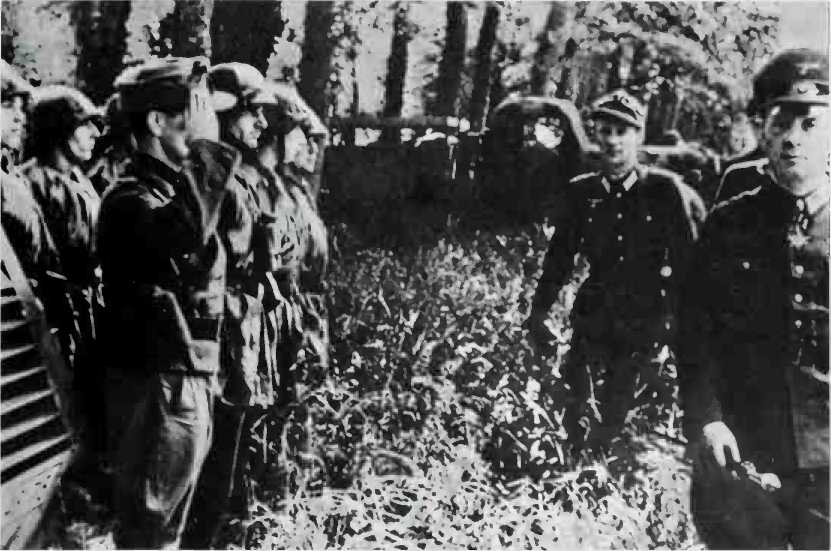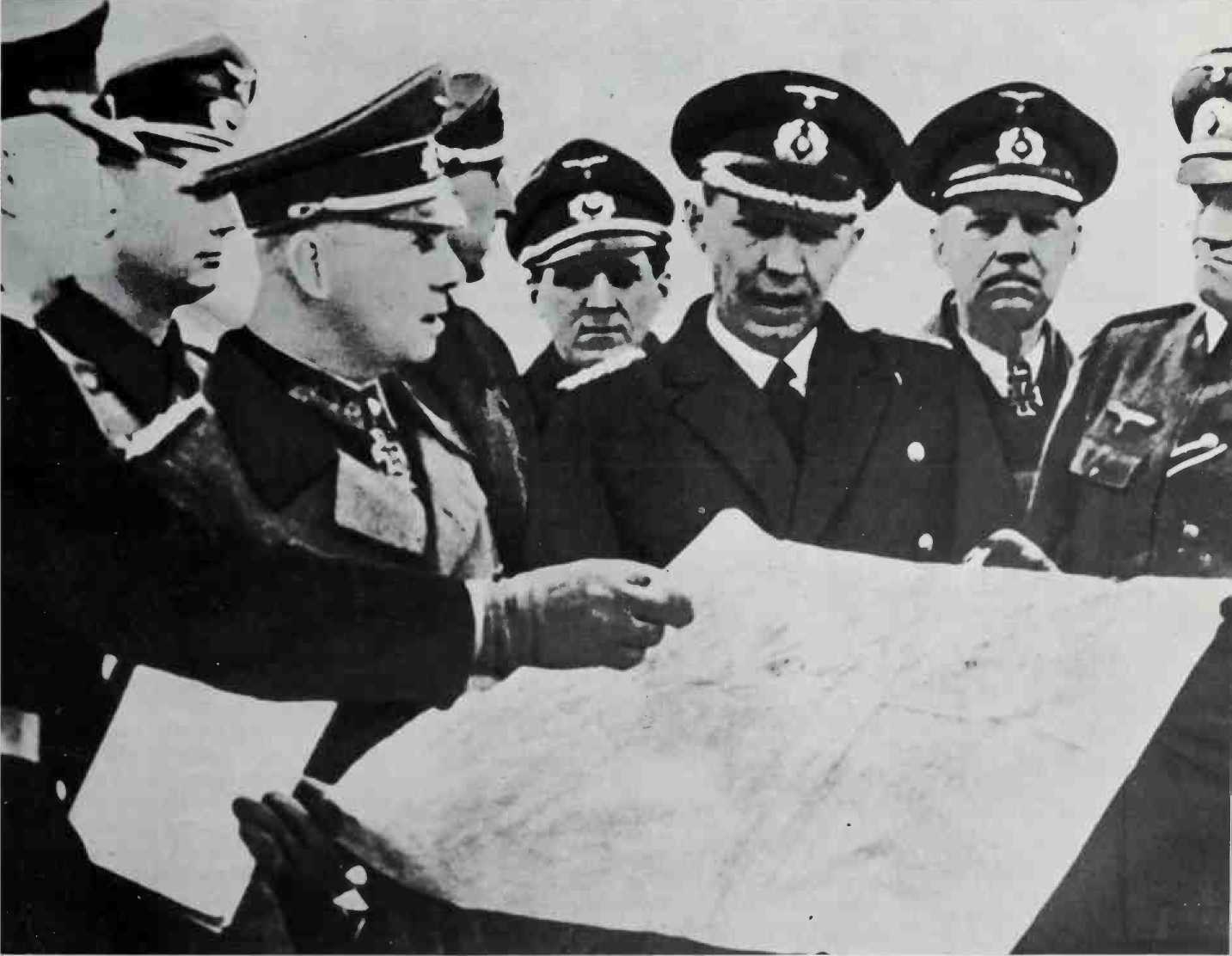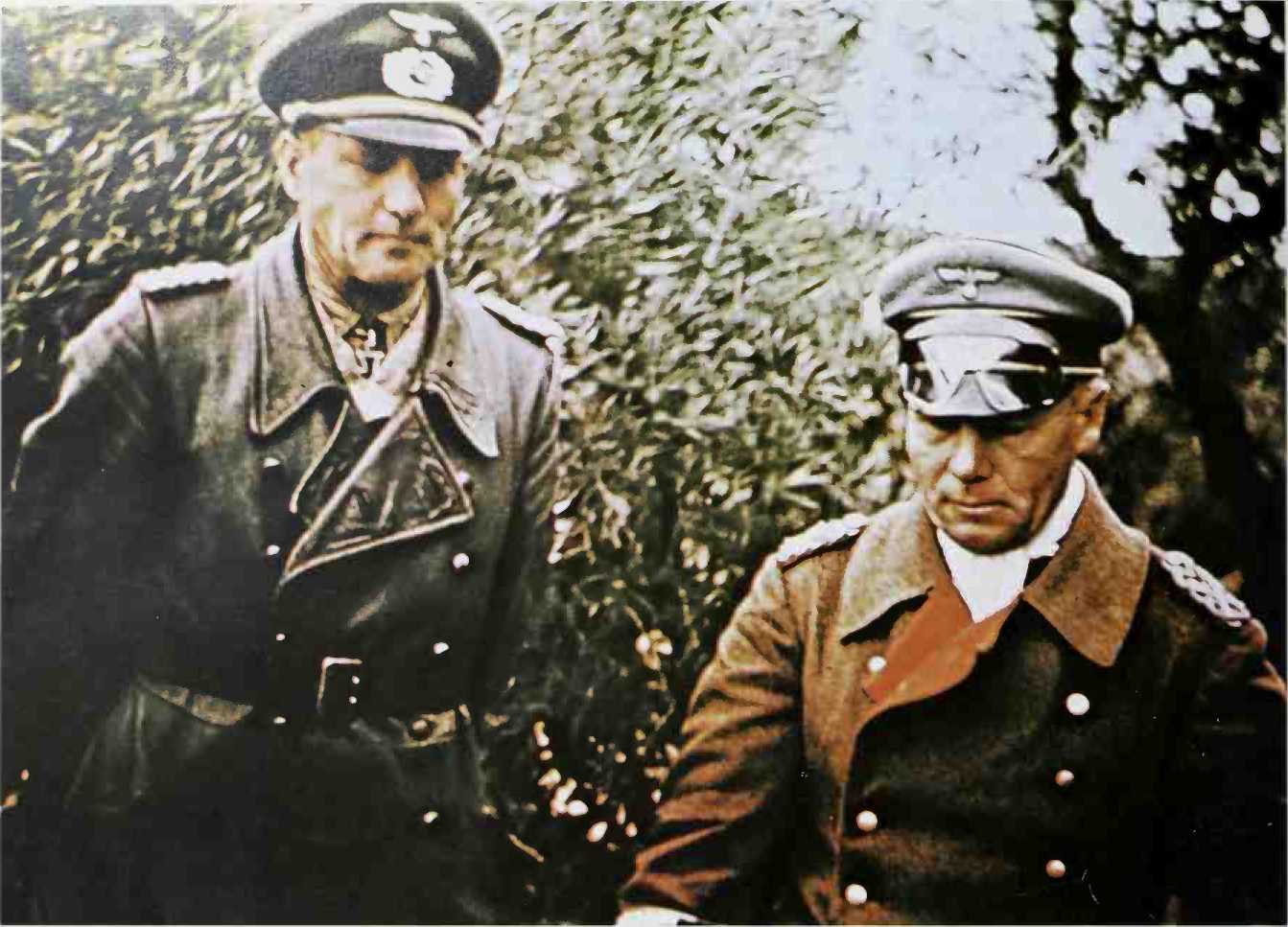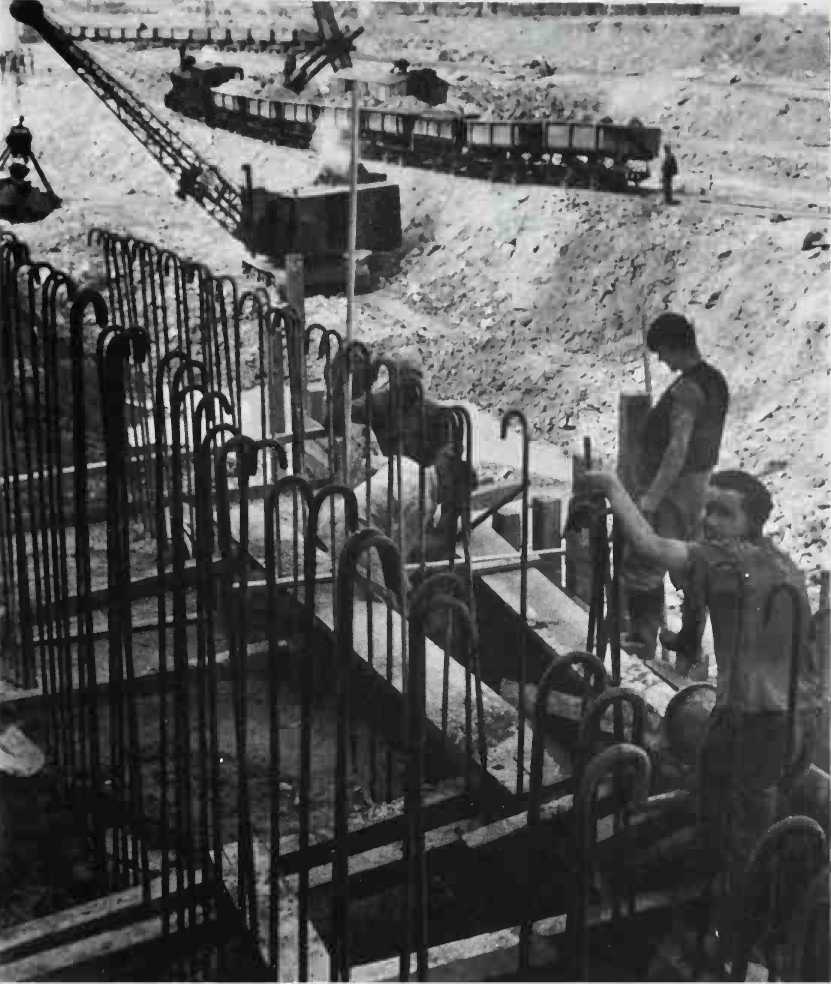The O. B. W., Field-Marshal von Rundstedt, was not entitled to give orders to Admiral Krancke, who commanded German naval forces in the West, to Field-Marshal Sperrle, head of Luftflotte III, to General Pickert, who commanded III Anti-Aircraft Corps. Krancke came directly under the command of Grand-Admiral Donitz, and the two others were responsible to Reichs-marschall Goring. Of course Krancke had only a small number of light ships and Sperrle found his forces reduced by June 6 to 419 aircraft, of which just 200 were operational. Nevertheless, considering that the aim was to destroy the enemy on the beaches, the lack of coordination between the three arms was to have catastrophic consequences for Germany.
In regard to the Navy it should be said that though Rommel, commanding Army Group ”B”, had a judiciously chosen naval attache on his staff in the person of Vice-Admiral Ruge, he still could not manage to make Krancke lay down a sufficiently thick minefield in the estuary of the Seine. Yet the Germans possessed a mine triggered by the pressure wave of a ship passing over it, and this could have



CIMETIERE DES ALLIES

A Rommel, complete with his familiar desert goggles, holds a snap conference on Panzer tactics in the field. to Hitler’s vacillation he failed to get complete control of all Panzer units in France, which was to have serious effects on the German defensive deployment.
> Intended to prevent French hopes from getting too high: the spectre of Dieppe is evoked by German propaganda.
Proved a devastating weapon.
In addition to these already considerable failings, naval gunners and army men could not reach agreement on the question of coastal batteries, their location, and the fire control methods to be used. The ex-Commander-in-Chief in Norway, Colonel-General von Falkenhorst, later expressed his thoughts in terms which were rather critical of his naval colleagues, when he wrote:
"When I look back, I can see that responsibilities were badly apportioned, and that this brought several mistakes in its train. The results were severe overwork, difficulties, and conflict. Army artillery officers had received a totally different training from the naval gunners, a training which had developed under very different sets of circumstances. Moreover, the ideas of the older senior officers-the generals and the admirals-on the problems often differed greatly. The locations of covered or uncovered batteries, camouflage, the setting of

A The work goes forward. More concrete defences are piled up at Lorient. The Atlantic ports were the natural foci for the extension of the Atlantic Wall complex.
Obstacles, etc, were in general fields which were entirely new to the naval gunners, since these problems never arose on board their ships, and, consequently, did not appear in their training schedules. They used naval guns as they had been installed by the engineers and could not or would not change anything at all. The result of this was that, all along the coast, batteries were set in the open, near the beaches, so that they were at the mercy of the direct fire of every enemy landing ship but could not effectively contribute to the defence of the coast. There followed several most unhappy conflicts between generals and admirals.”
Falkenhorst, who had installed 34 coastal defence batteries covering the approaches to Bergen, would seem competent to level these criticisms. Some of these guns, between Narvik and Harstad, were of 16-inch calibre. It is nonetheless true that the naval gunners also had some right on their side, because the army gunners thought they could hit moving targets like ships by using indirect fire methods.




 World History
World History









